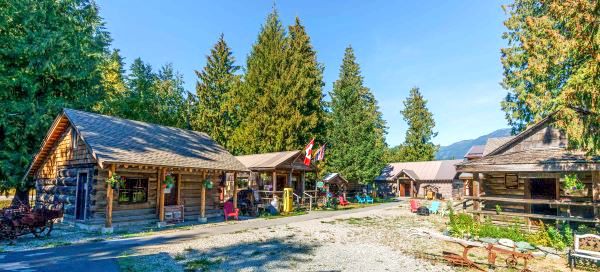PEMBERTON AND DISTRICT MUSEUM AND ARCHIVES SOCIETY
Registered Name: PEMBERTON AND DISTRICT MUSEUM AND ARCHIVES SOCIETY
Business No: 107831794RR0001
This organization is designated by Canada Revenue Agency (CRA) as a registered charity. They comply with the CRA's requirements and has been issued a charitable registration number.

Donate to this charity
Give in honour or send an ecard (optional)
Keeping a Rich History Alive
The Pemberton Museum collects, preserves and displays artifacts connected with the human history of Pemberton and the surrounding district.
The displays feature:
The self-sufficiency of the Lillooet [Stl'atl'imx] people before contact with people making their way to the gold fields, the coming of people attracted by gold on the Fraser and some of the physical changes they created in the District; and the lives of the settlers and later residents.
Life moved slowly in the area as the connection to the outside world was by pack train. The railroad did not arrive until 1914. Electrical power was not available until 1951 and the highway was not open until 1967.
The Pemberton Pioneer Women, a committee of the Women's Institute, started collecting examples of life in the area and made the first moves to found a museum which would house the collections and tell the story of the early days.
A piece of land was made available in the Village of Pemberton and the first museum opened in 1982. As the museum grew and more artifacts were contributed, a larger site was obtained from Village of Pemberton (BC Rail lands). This is the current location.
The official move to the new site started in 1992 and buildings to house the growing displays continue on an ongoing basis. The museum is run by volunteers and a curator and is open from June to September.
The Collecting District is defined geographically as: those areas drained by waters entering the north end of Harrison Lake and those areas drained by waters entering Anderson Lake.
Acknowledgement
The museum recognizes and respects that the Pemberton museum operates within the traditional unceded territory of Lil'wat and Stl’atl’imx Nations. We also acknowledge that the museum holds indigenous items of cultural significance to local First Nations and since 2018 we have begun the journey of repatriation of these items. There are no human or skeletal remains in the Museum’s collection nor are there any funerary objects or other artifacts related to human remains.
See our Repatriation Policy and please contact or curator, Charmaine Carpenter.


